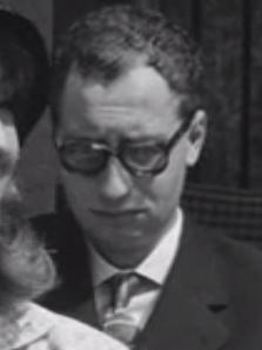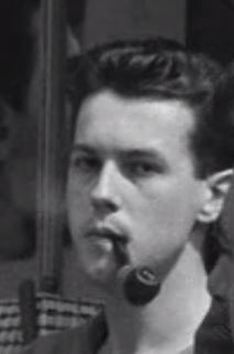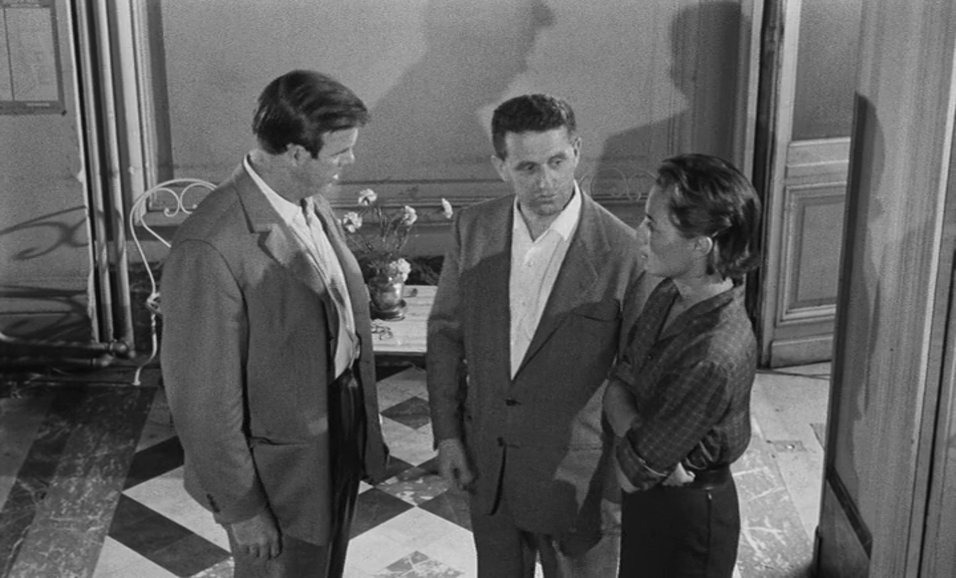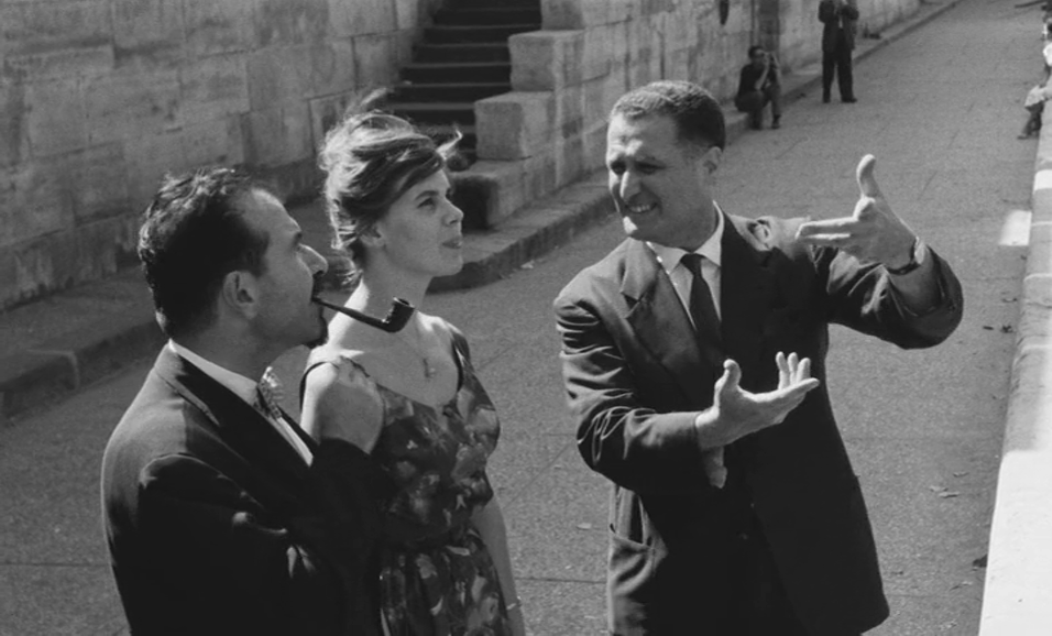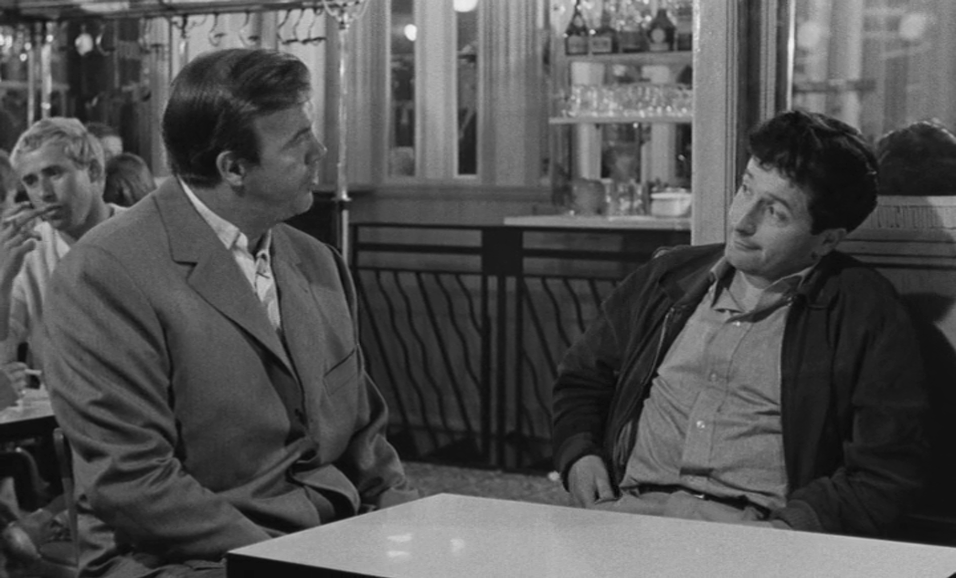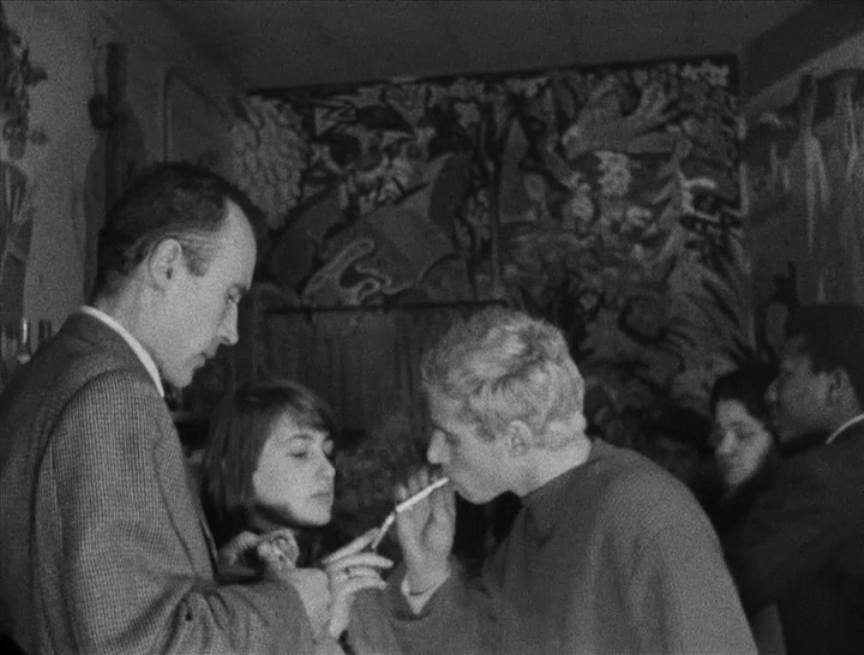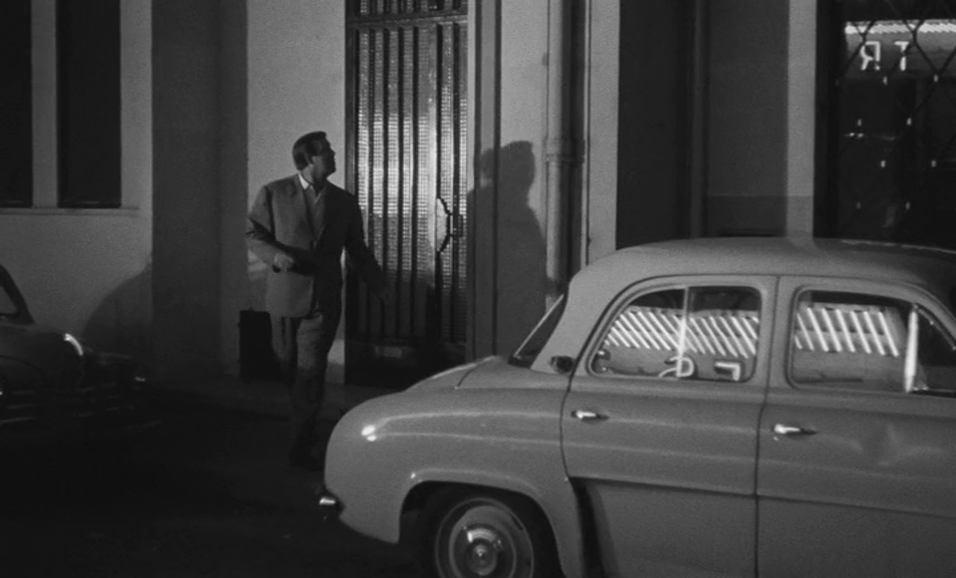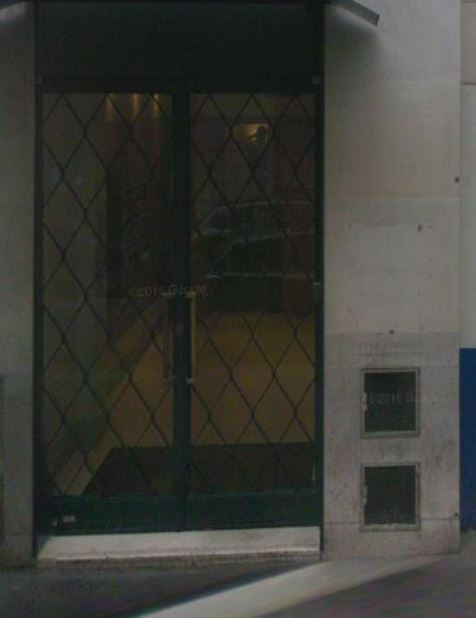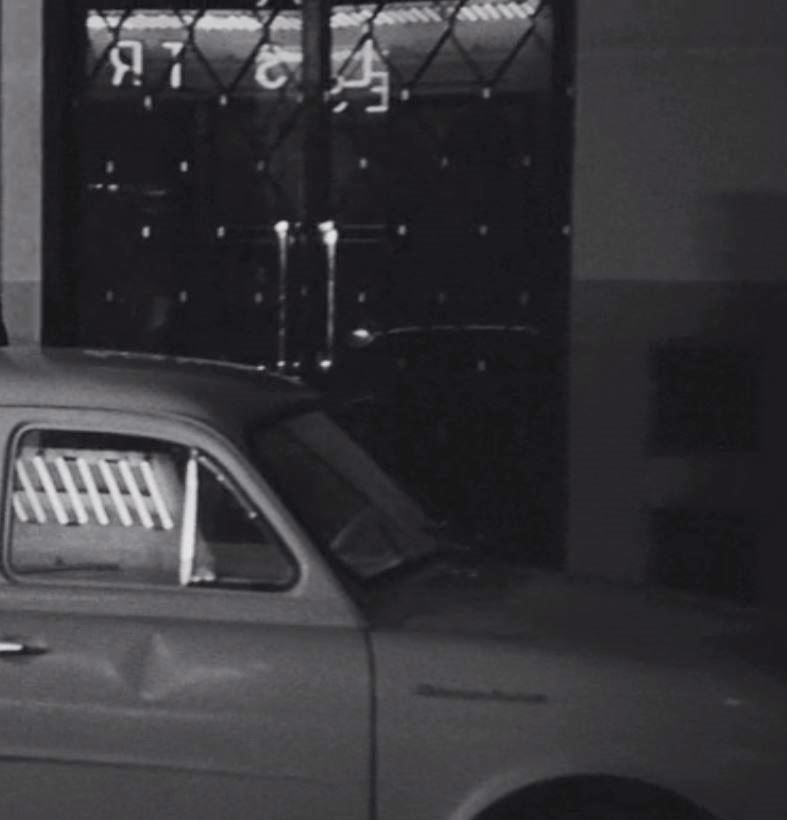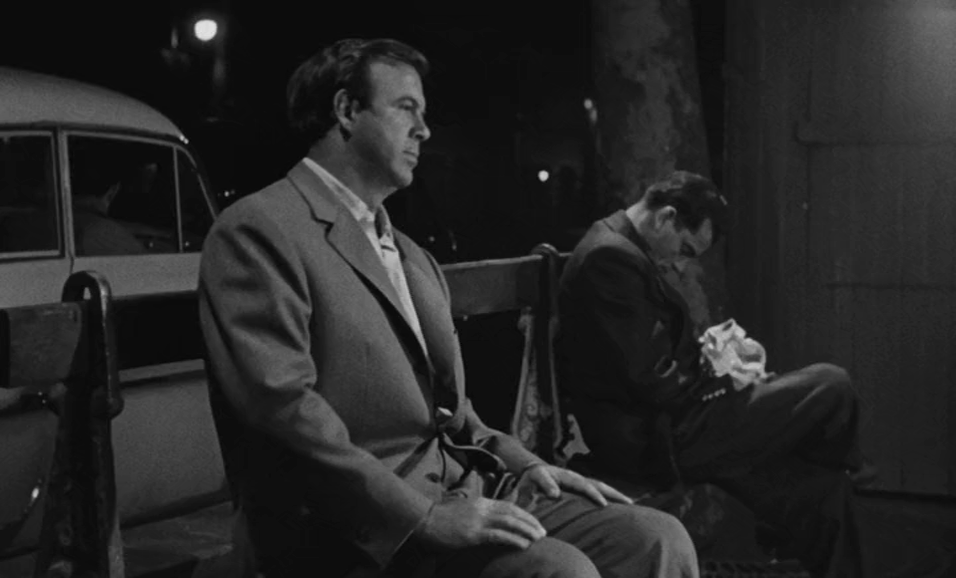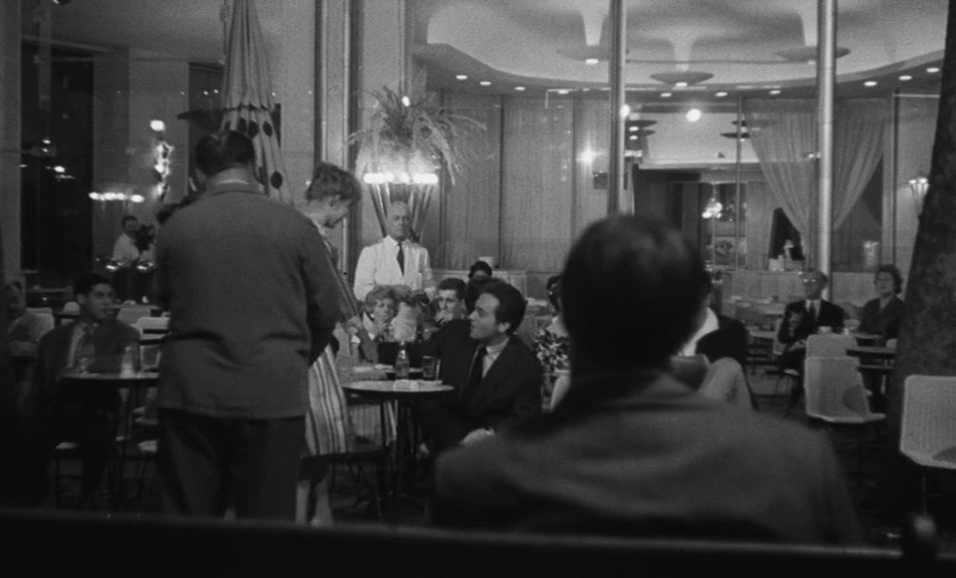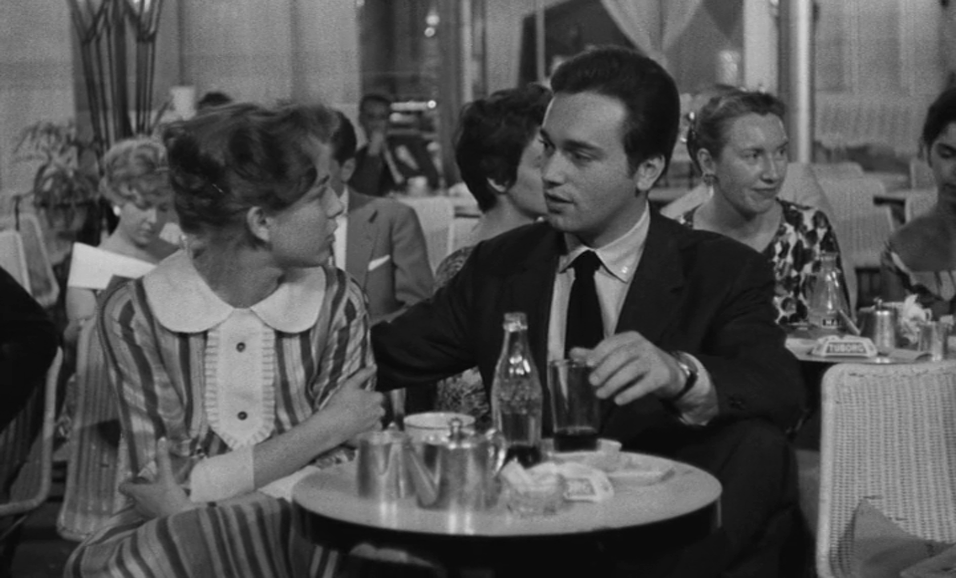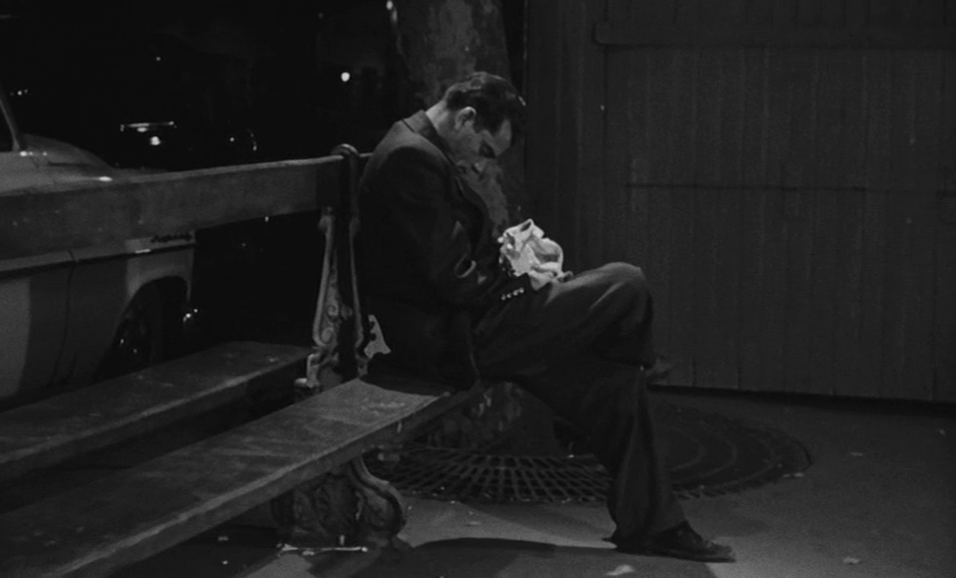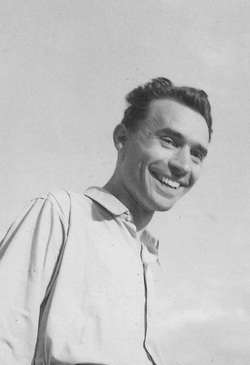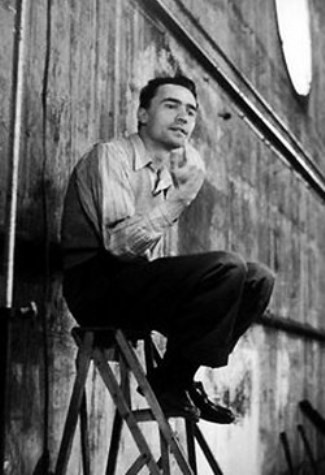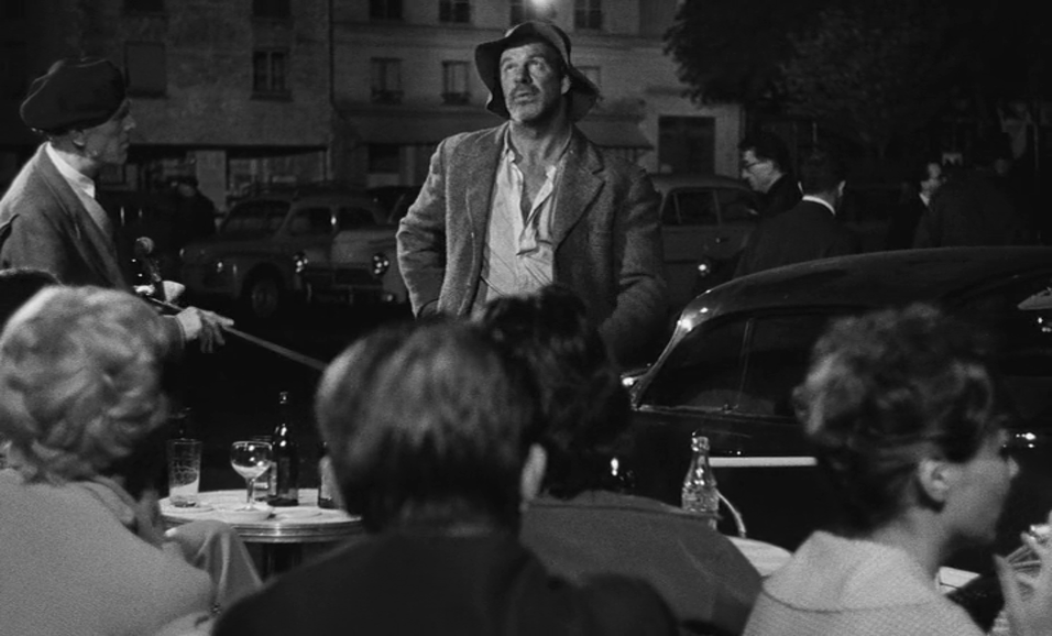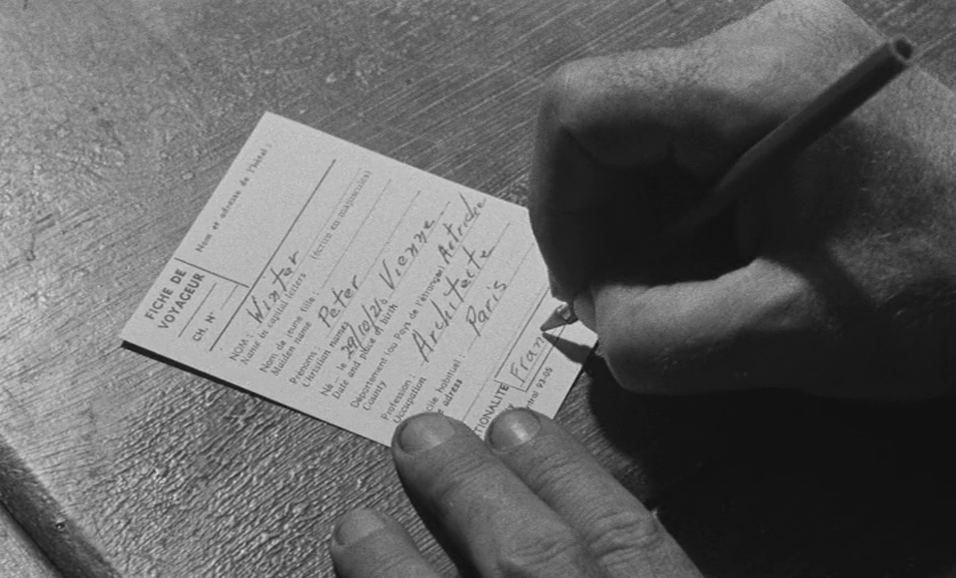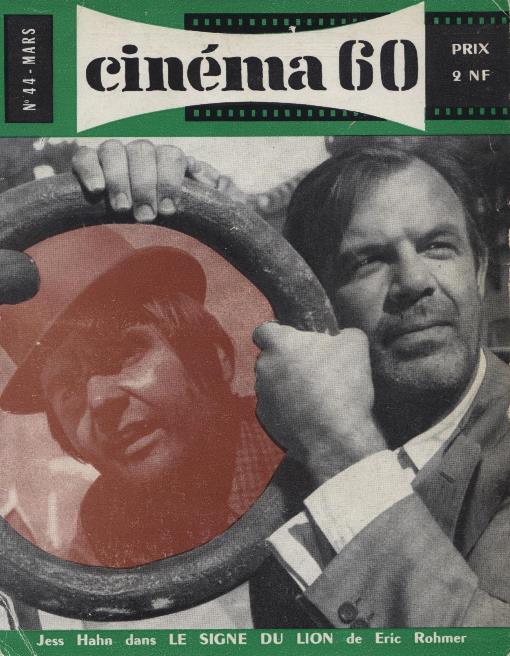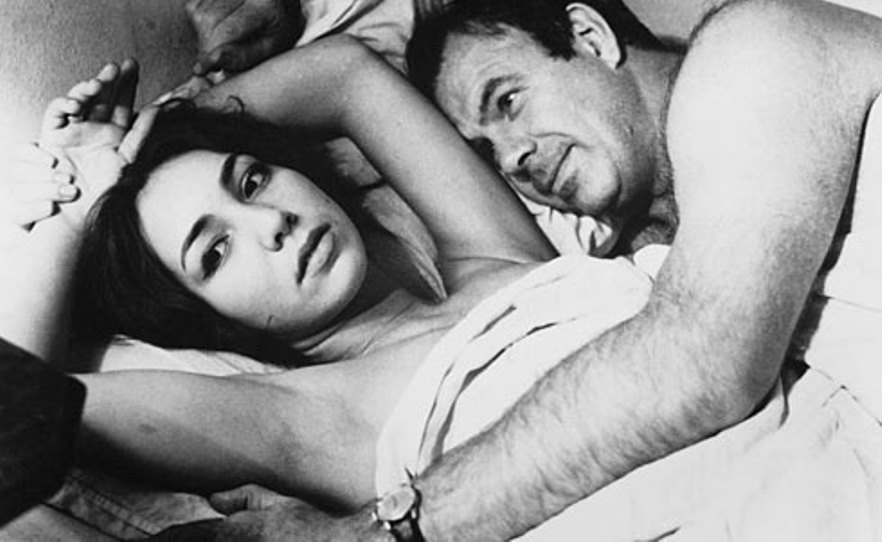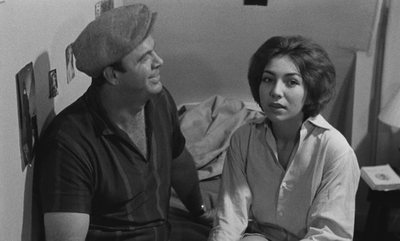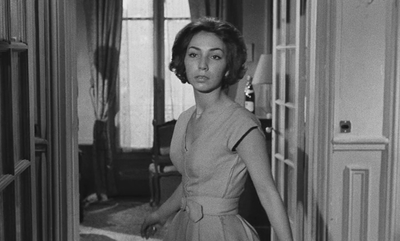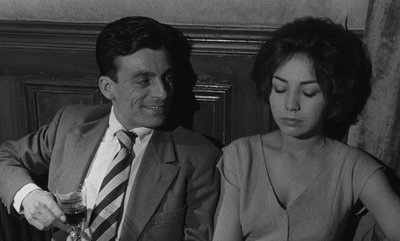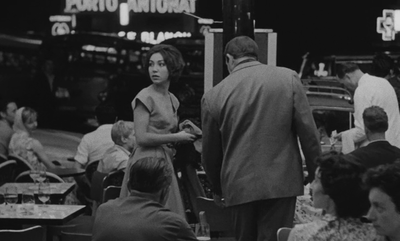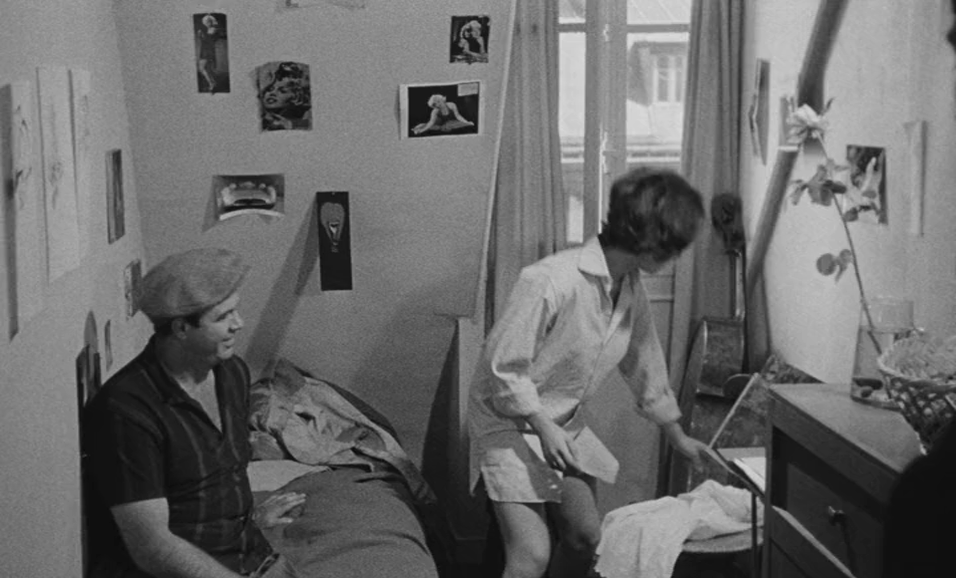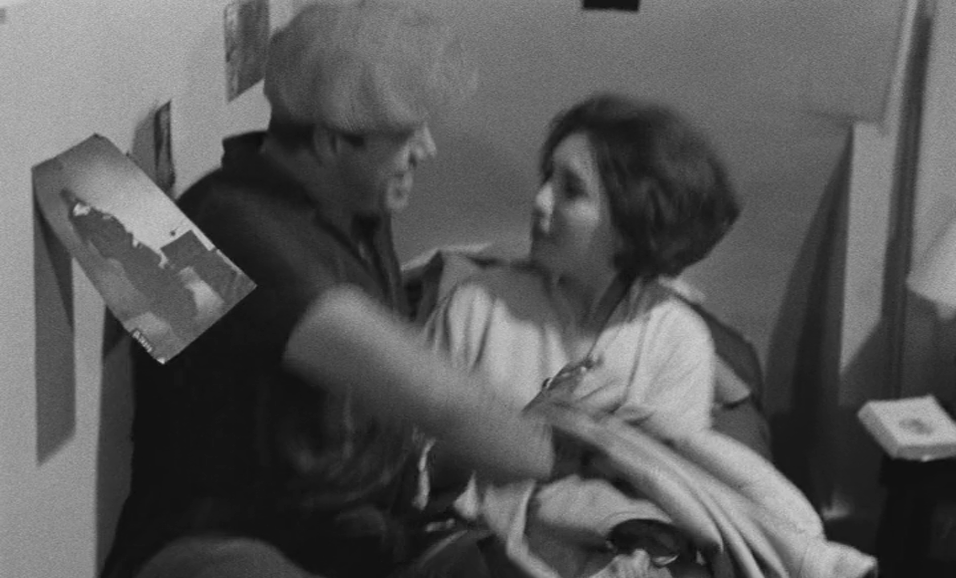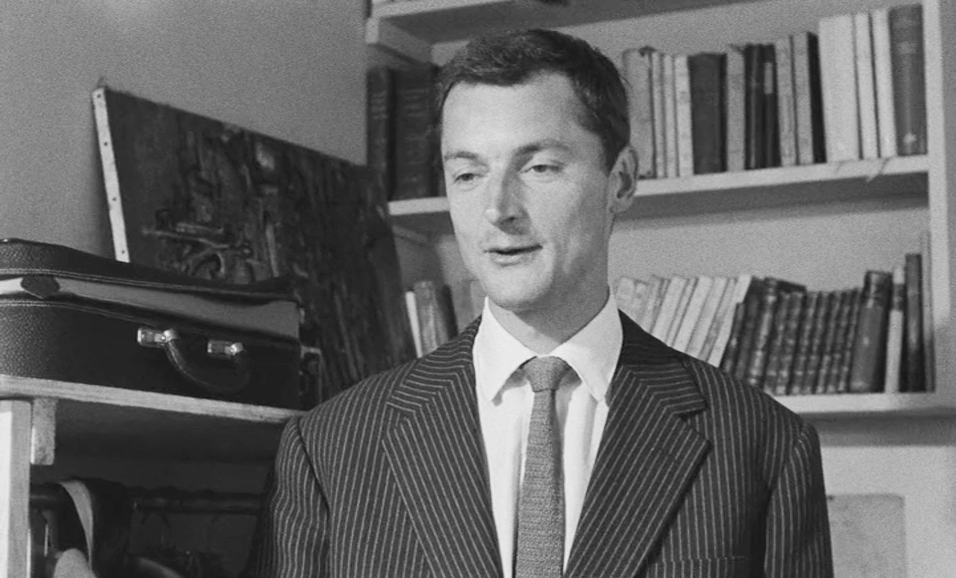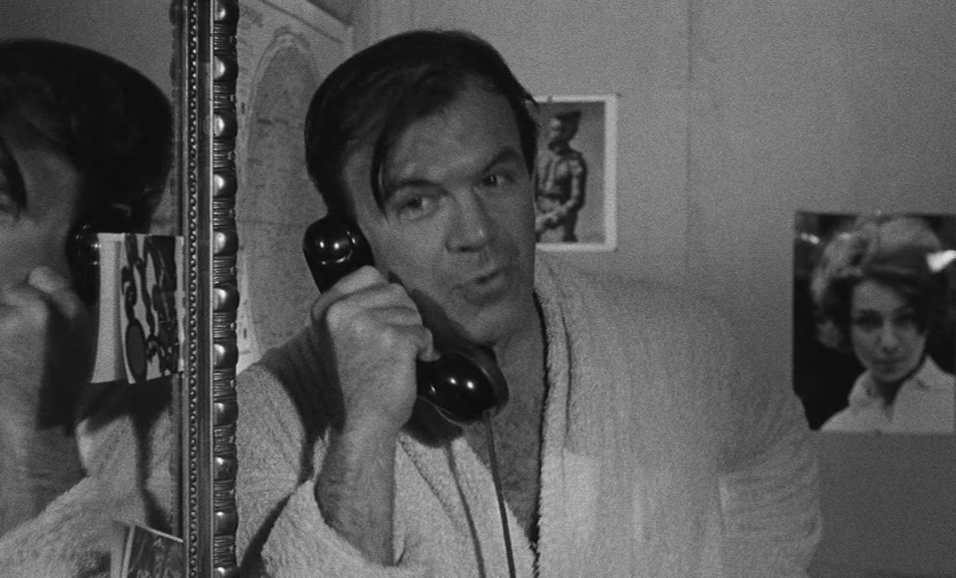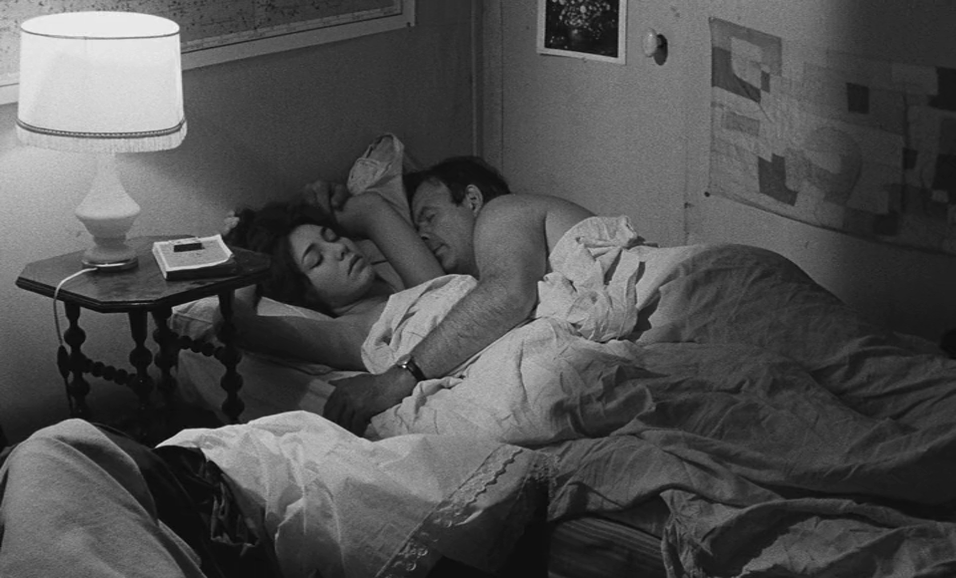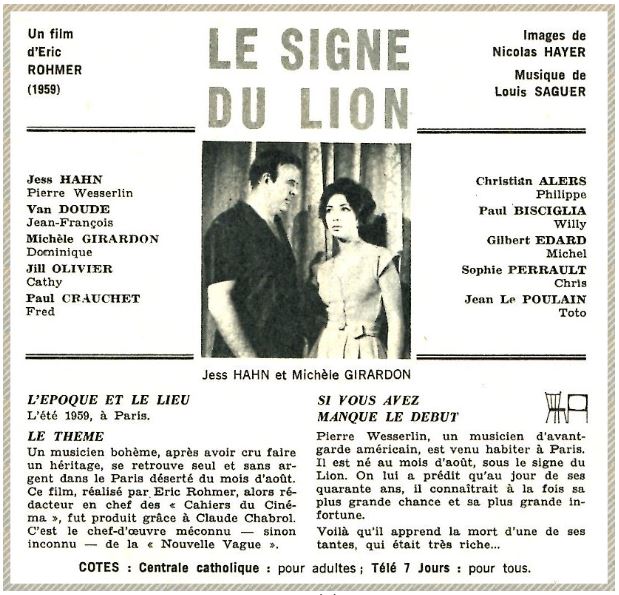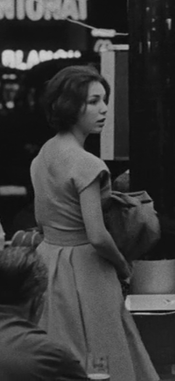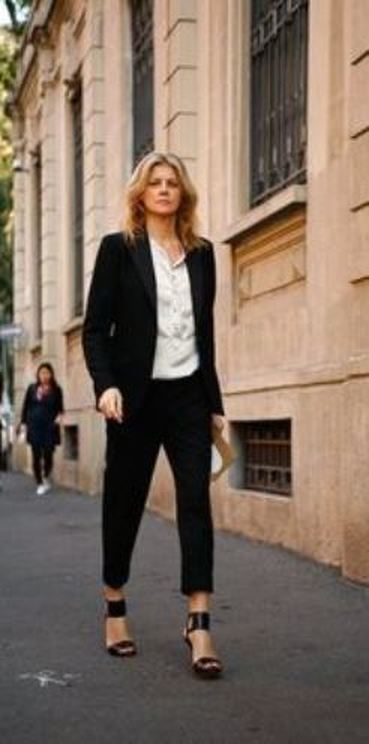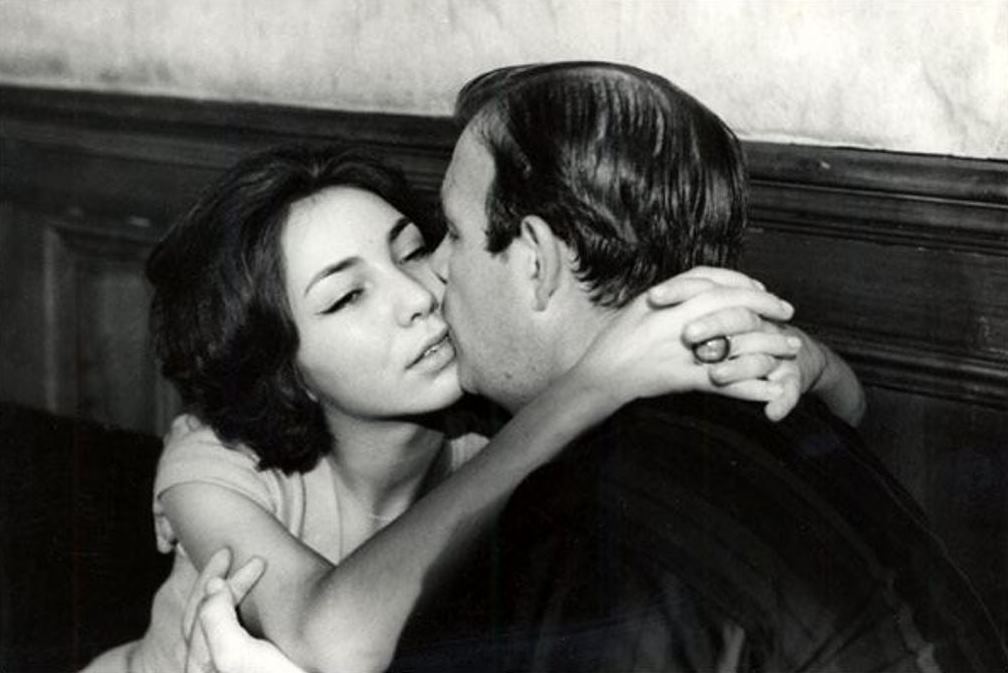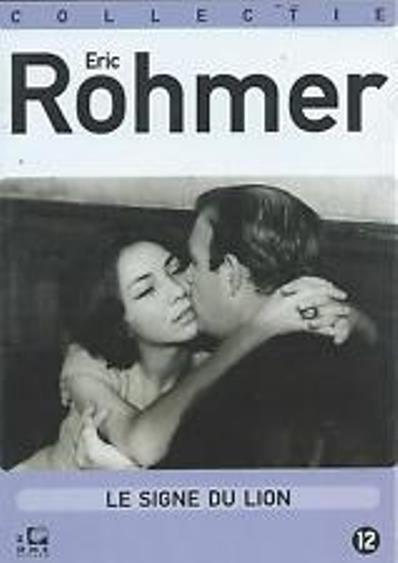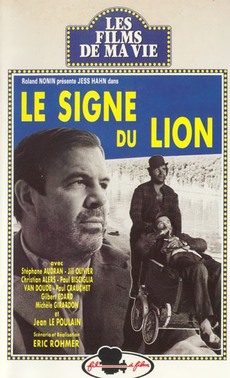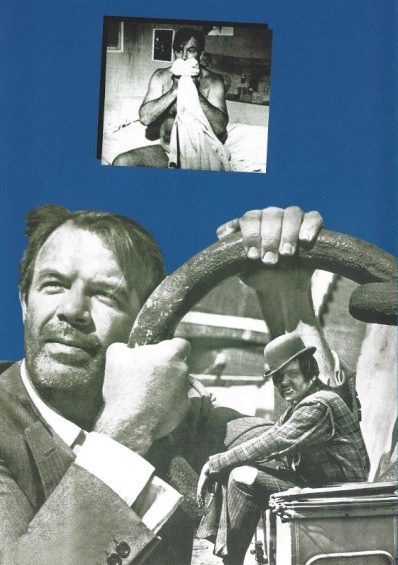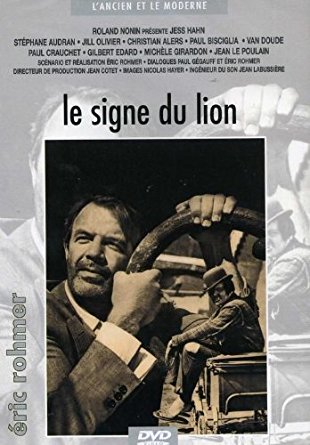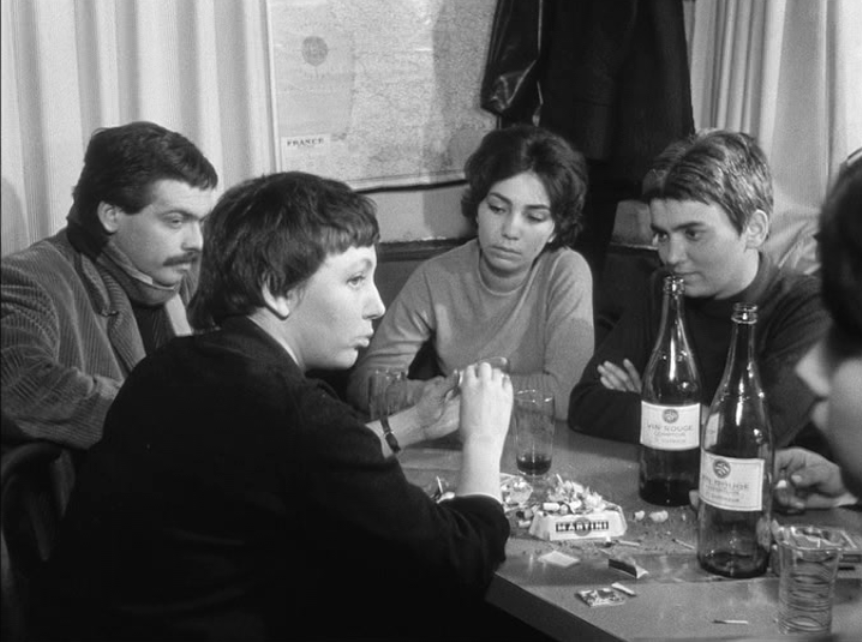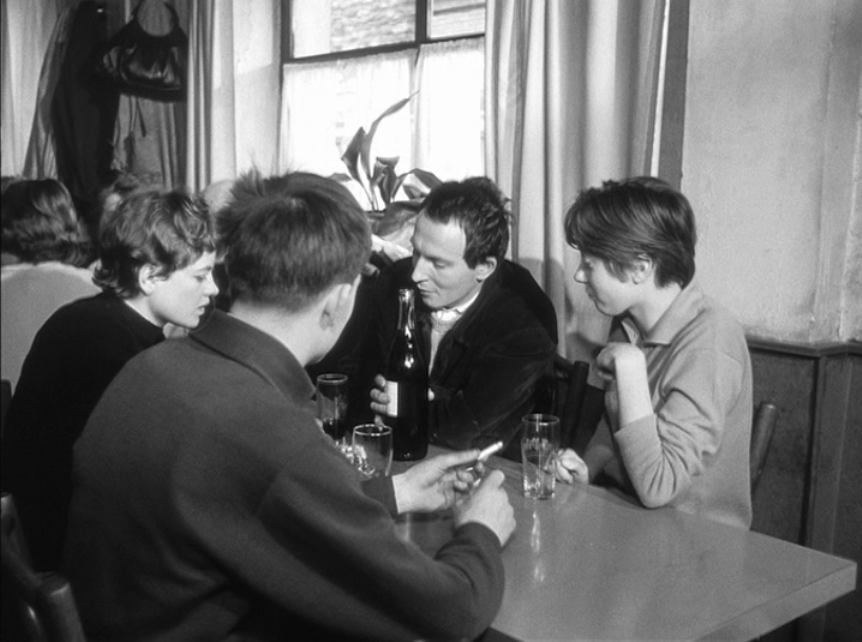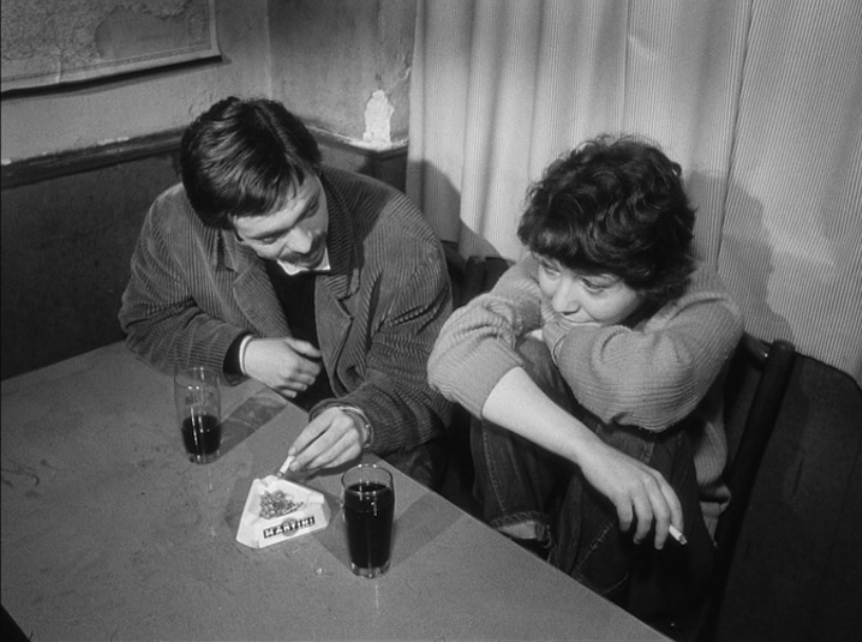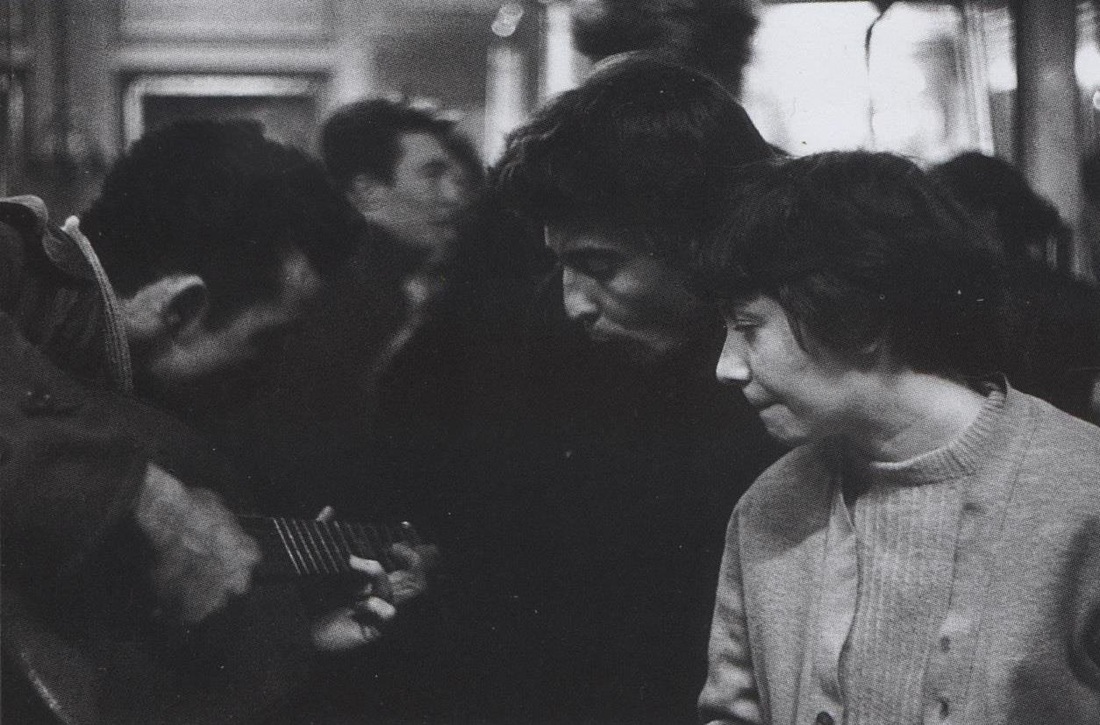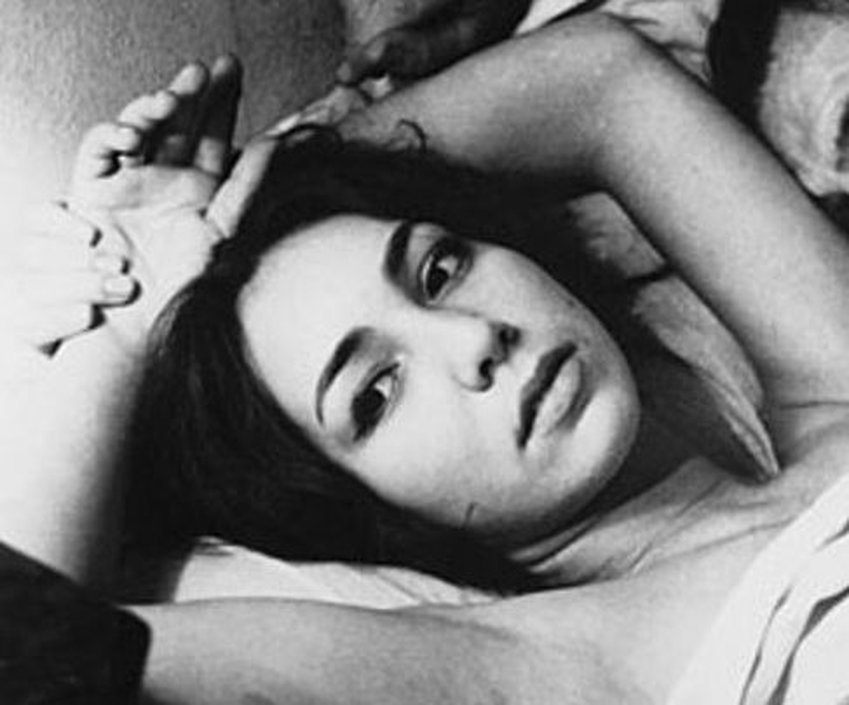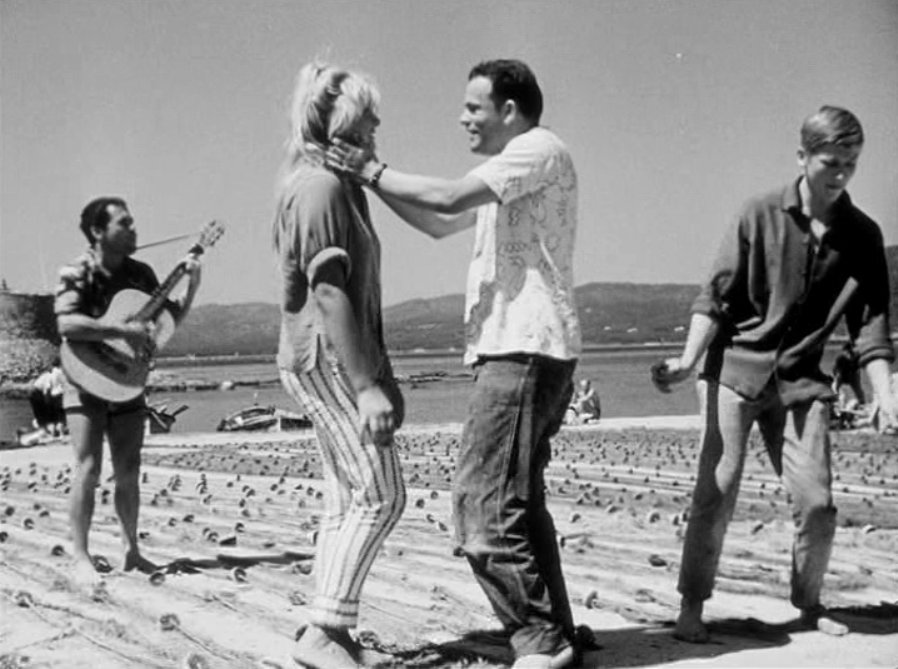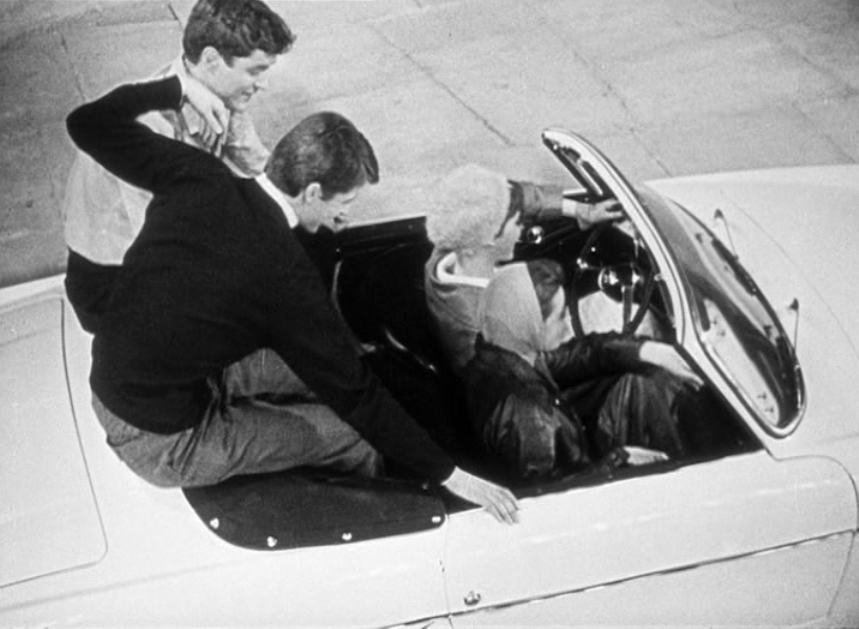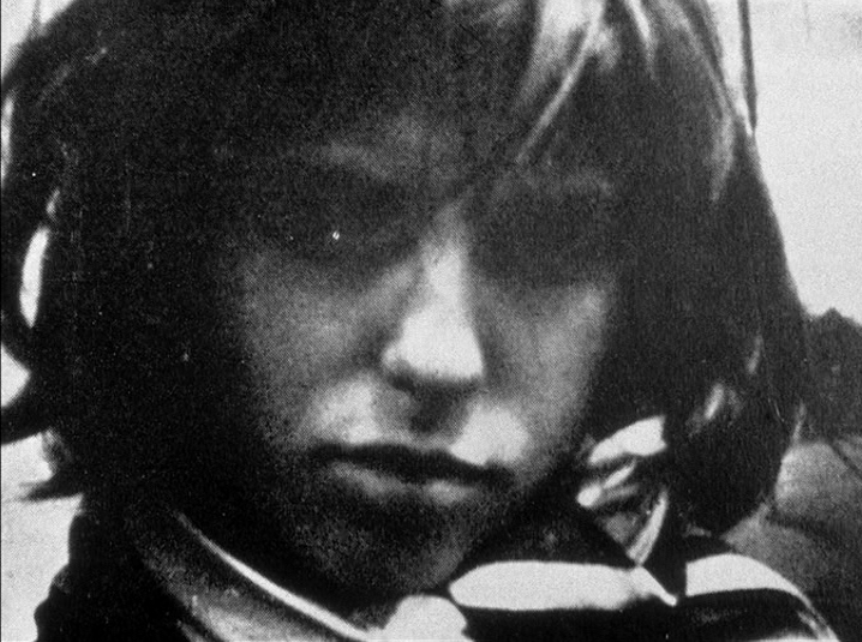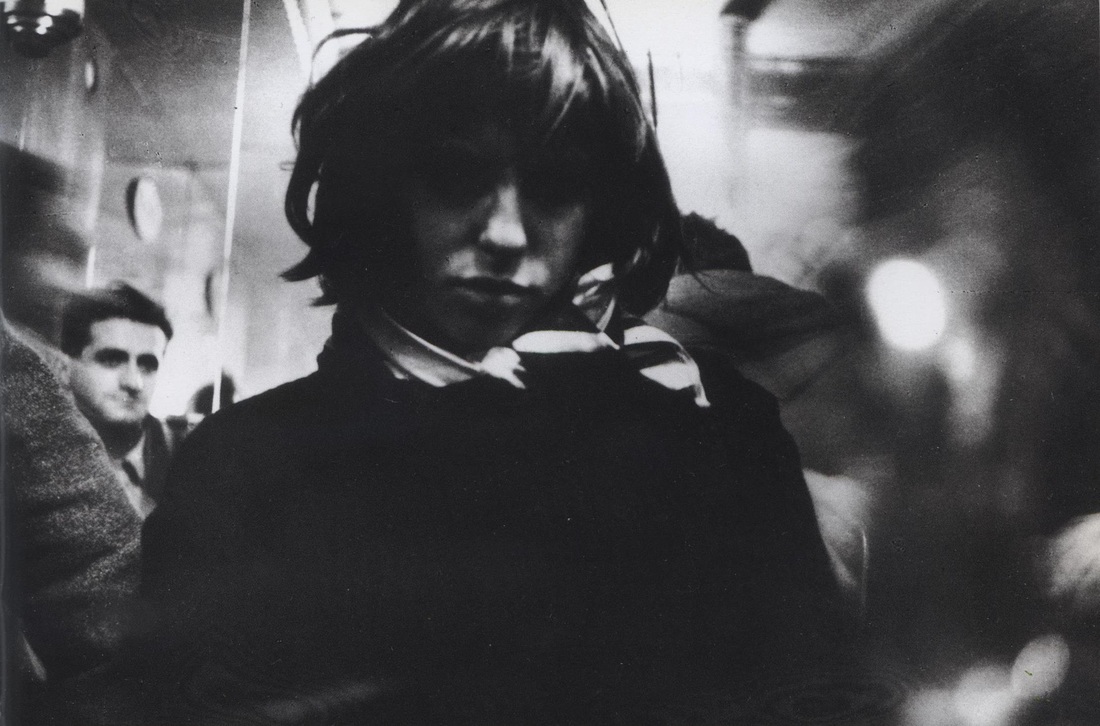SOURCE: https://www.thecinetourist.net/le-signe-du-lion-six-small-things.html
Le Signe du Lion - six small things
1/ Fabian
|
At the terrace of a café on the
Champs Elysées, Pierre's friends (Michèle Girardon, Van Doude and
Gilbert Edard) are discussing his whereabouts while behind them three
men are flicking through the July 1959 issue of Modern Screen. One of
them exclaims 'Oh my gosh' and holds up the magazine for them to see:
|
The picture that inspires horror is a two-page spread of the sixteen-year-old singer Fabian:
Fabian had not yet begun work on his first film, Don Seigel's Hound-Dog Man (1959), but had already had hits with the songs I'm A Man and Turn Me Loose.
Fabian's briefly glimpsed body in Le Signe du Lion doesn't, I think, resonate with the films other signifiers. The men reading the magazine might, if I could identify them. According to the IMDB the critic Michel Mourlet appears in the film as a 'consommateur'. I think the man with the pipe is Mourlet. Noël Herpe's biography of Rohmer quotes Pierre Rissient saying he was present in the background of this shoot. I think he might be the man in the middle:
Fabian's briefly glimpsed body in Le Signe du Lion doesn't, I think, resonate with the films other signifiers. The men reading the magazine might, if I could identify them. According to the IMDB the critic Michel Mourlet appears in the film as a 'consommateur'. I think the man with the pipe is Mourlet. Noël Herpe's biography of Rohmer quotes Pierre Rissient saying he was present in the background of this shoot. I think he might be the man in the middle:

|
The critic Fereydoun Hoveyda also appears as a 'consommateur', according to the IMDB.
At least one online filmography identifies
Hoveyda as the husband of the hotel proprietess played by Stéphane
Audran, but the man in the middle here, below, is clearly not Hoveyda.
According to Herpe it is Roland Nonin, the film's 'delegate producer':
|
Hoveyda's cameo is, in fact, as a tourist having something about Notre Dame explained to him, in Italian:
(The IMDB also lists Alain Resnais and Jean-Pierre Melville as 'consommateurs' in this film. I have looked very hard and I haven't found them yet.)
2/ le blond
There are other familiar faces in
the many cafés featured in this film. One of the few I recognise is the
blond man sitting behind Pierre (Jess Hahn) and Willy (Paul Biscoglia)
at the Bonaparte:
I don't know the man's name but I recognise him from a different café in a different Rohmer film, La Sonate à Kreutzer (1956):
This is somewhere on the rue de la Huchette (see here for
my piece on the locations of this film). If you recognise this man,
either as an acquaintance of Rohmer or just a Left Bank denizen, again,
do let me know.
3/ la rue de Caumartin
In a piece I wrote a few years ago on the locations of Le Signe du Lion,
I hadn't been able to identify one of the places Pierre goes to in
search of a friend who could help him out. The preceding shots showed
the place de l'Opéra and the boulevard des Italiens, and immediately
after he is near the place de l'Opéra again, so this was likely to be in
that general area:
It t urns out to be the rue de
Caumartin. The apartment building at no. 5 has been modified beyond
recognition, but the doorway at no. 7 was until 2010 the same:
4/ Un homme qui dort
Pierre sits on a bench in front of
a café, watching the customers and listening to a violinist. The café
is identified by some sites as the Café de la Paix on the Place de
l'Opéra, but I can't see any resemblance. Among the customers is an
actress whom François Truffaut would soon rename Marie Dubois:
On the bench next to Pierre is a
sleeping man. The sequence ends with Pierre getting up and the camera
adjusts position to frame the man on the bench. This looks to me a bit
like Jacques Rivette:
Godard had already made a cameo appearance in Le Signe du Lion, so
a cameo from Rivette would not be out of place. On the other hand, I
also think that Rivette is here, in the film's closing scene:
And the man right of him with a light jacket and a cigarette in his mouth could well be Truffaut. (See here for the New Wave cameos of which I am more sure.)
Another cameo appearance I
expected to find was from the film's stills photographer André Dino. I
think he is the man in the background, here, wearing glasses:
See here for other New Wave cameos by André Dino.
5/ Peter Winter
Who is Pierre Wesselrin? He tells a
woman whom he thinks is Swedish or English but who says she is French
(and who is played by a Russian) that he himself is 'everything...,
American, Austrian, Swiss...'. Earlier, Willy had referred to him as
'l'Américain', and the wealth he expects to inherit comes from an aunt
in Austria. His accent is that of the actor, the American Jess Hahn.
|
When Jean-François asks for him at
the Hôtel du Mont Blanc he is told that they have 'never heard of
Wesselrin'. Jean-François speculates that he may have registered under a
false name, which is what we see Pierre attempting to do when he
completes a registration card at the Hôtel de Senlis. The pseudonym
'Peter Winter' adds the transposition of his first name to a surname
indicating the season he would very much prefer it to be, given the
unbearable heat of summer and the absence from Paris of most of his
friends. As occupation he puts architect, rather than musician. He gives
his nationality as French and home address as Paris, despite putting
Vienna as his place of birth and Austria as his country. Earlier
he had said that his birthday was August 2nd, under the sign of Leo;
the false birth date he gives on the card, 29/10/21, is another
rejection of the season in which his misery has intensified.
October 29th 1921 is actually the birth date of the actor Jess Hahn. |
6/ une fugitive beauté
It has been remarked (here)
that Pierre's girlfriend Cathy disappears from the film 'without
ceremony' after twenty-one minutes. Up until then she is a striking
presence:
We learn only a little about Cathy
in these twenty-one minutes. Her star sign is Aquarius. She is
probably, like Pierre, a musician, since there is a cello and a music
stand in the small room she occupies at 4 rue de Grenelle (Jean Rouch
had an apartment in the same building at that time). She has various
images pinned to her wall, mostly hard to make out, but several look
like Marilyn Monroe:
The other images include drawings, a photograph of a racing car and what looks like a tearsheet from a fashion magazine:
She has about fifty books on her shelves and an abstract-looking painting on the top of a wardrobe:
The first we saw of Cathy was a
photograph on Pierre's wall above his bed; the last we see of her is
asleep in that bed, in Pierre's arms:
Cathy leaves Paris for the summer
holidays, and so leaves the film; her disappearance is a function of the
plot. More difficult to explain is the disappearance of Jill Olivier,
the actress who plays Cathy. She has no other film credits and there
appears to be no record of her existence other than as an actress in
Rohmer's film. Even then the record can be deficient. This account of
the film, from (I think) Télé 7 Jours, captions her image with the name of another actress in the film:
|
Even worse, in 2002 the Figaro
Magazine's critic Patrick Besson praises Jill Olivier's 'simple
elegance', but since he describes her as the double of Figaro fashion
journalist Virginie Mouzat, he is clearly thinking of Michèle Girardon,
not Jill Olivier.
|
Michèle Girardon's rôle in Le Signe du Lion
is far more substantial than Jill Olivier's, and her film career is by
comparison stellar, with credits in films by Bunuel, Malle, Astruc,
Vadim, Hawks and Siodmak. She is also central to Rohmer's La Boulangère de Monceau
(1963), from which the image above is taken. Nonetheless, it was a
picture of Jill Olivier that was used by Artificial Eye for a 2006 dvd
release of Le Signe du Lion, making her effectively the film's poster-girl since then:
As beautiful as she is, and as
effective as is the cropping of the original production still, this is a
very odd choice of image, given that the film is so strongly centred on
its male protagonist. At least one other editor has used this still
(uncropped), but most have, rightly (and despite his ugliness), foregrounded Jess Hahn:
Le Signe du Lion is Jill
Olivier's only credit, but it is not her only screen appearance. Here
she is in a film shot in April 1959, at exactly the same time as
Rohmer's film:
This is a scene from Guy Debord's Sur le passage de quelques personnes à travers une assez courte unité de temps.
The film returns several times to this café where twenty-one young men
and women are drinking wine and talking. At Jill Olivier's end of the
table, sitting opposite her, is Michèle Bernstein:
I haven't recognised anyone else as definitely. The woman on the left in the left image, below, may be Colette Gaillard:
I think I recognise two people from the photographs published by Ed Van Der Elsken as Love On the Left Bank, taken in and around Chez Moineau, rue du Four, in the mid 1950s:
The other people in this scene are
all, necessarily, acquaintances of Guy Debord. Jill Olivier's presence
suggests that she too was a part of this 'provisional micro-society' (as
Debord calls it), but there are no photographs of her in Van Der
Elsken's book and no mentions of her name in any histories of
Situationism. She has disappeared from that history as she has from that
of the New Wave.
(If anyone does know anything more about Jill Olivier, please do let me know, here.)
Appendix: Sur le passage de quelques personnes par la Nouvelle Vague
The presence of Jill Olivier in Guy Debord's Sur le passage de quelques personnes à travers une assez courte unité de temps and in Eric Rohmer's Le Signe du Lion is one of at least four curious if coincidental connections between Debord's film and the French New Wave.
The second relates to a sequence in Sur le passage de quelques personnes... where a group of men and women are dancing on a beach:
The second relates to a sequence in Sur le passage de quelques personnes... where a group of men and women are dancing on a beach:
We don't hear any music but we can
guess what kind of music the guitarist is playing since that is Pierre
Assier, star of and composer for Jean-Daniel Pollet's La Ligne de mire
(1959), the recently rediscovered New Wave feature that didn't get
released at the time. (Assier's music for the film has a strong Latin
inflection.)
The remarkable thing is that La Ligne de mire is Assier's only credit as an actor, and yet like Jill Olivier he appears uncredited in Sur le passage de quelques personnes.... Moreover, he appears to be wearing the same shirt in both films:
The remarkable thing is that La Ligne de mire is Assier's only credit as an actor, and yet like Jill Olivier he appears uncredited in Sur le passage de quelques personnes.... Moreover, he appears to be wearing the same shirt in both films:
The third connection between Sur le passage de quelques personnes... and the Nouvelle Vague has often been noticed. At the end of Debord's film the voiceover comments on the nascent New Wave:
|
|
There are now people who pride
themselves on being authors of films, as others were authors of novels.
They are even more backward than the novelists because they are unaware
of the decomposition and exhaustion of individual expression in our
time, ignorant of the end of the arts of passivity. They are praised for
their sincerity since they dramatize, with more personal depth, the
conventions of which their life consists. There is talk of the
liberation of the cinema. But what does it matter to us if one more art
is liberated through which Pierre, Jacques or François [i.e. Pierre
Kast, Jacques Doniol-Valcroze and François Truffaut] can joyously
express their slavish sentiments? The only interesting venture is the
liberation of everyday life, not only in the perspectives of history but
for us and right away. This entails the withering away of alienated
forms of communication. The cinema, too, has to be destroyed.
|
This text is read over a blank
screen, but when it has finished we see an advertisement showing four
young people in a sports car, with a zoom in to a close-up of the woman
driving:
The star of this advertisement is Anna Karina. The voiceover proceeds to comment on the nature of stardom:
|
|
In the final analysis, stars are
created by the need we have for them, and not by their talent or lack of
talent or even by the film industry or advertising. Miserable need,
dismal, anonymous life that would like to expand itself to the
dimensions of cinema life. The imaginary life on the screen is the
product of this real need. The star is the projection of this need.
|
Two other extracts from Karina's advertisements are used in Sur le passage de quelques personnes...:
Debord's use of Karina's
image predates her stardom in the films of Jean-Luc Godard. The story is
that Godard saw these advertisements and tracked her down, eventually
persuading her to take on a role in Le Petit Soldat.
My last coincidence also connects to Godard. In Sur le passage de quelques personnes... Debord twice uses a photograph of a woman by Ed Van Der Elsken, the second time just before he shows Karina in her bath:
In both instances the photograph is cropped:
What Debord crops from the image
is the man in the background, leaning against the café counter. I don't
know who that man is, but I do know that he turns up again ten years
later as an extra in the métro scene of Godard's Masculin-Féminin:
If that's not the same man I'll eat my hat.
References
- Bureau of Public Secrets: On the Passage of a Few Persons Through a Rather Brief Unity of Time (film soundtrack) - translation adapted
- Ed Van Der Elsken, Love On the Left Bank - facsimile edition (Stockport: Dewi Lewis Publishing, 1999 [1956])
- Noël Herpe, Eric Rohmer: A Biography (New York: Columbia University Press, 2016)





